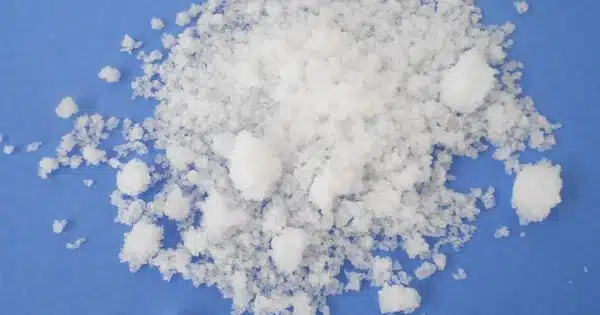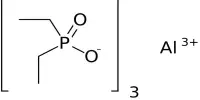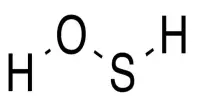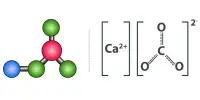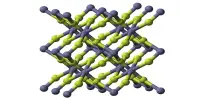Ammonium bifluoride is an inorganic compound with the formula [NH4][HF2] or [NH4]F·HF. It is a white crystalline solid at room temperature. It is produced from ammonia and hydrogen fluoride. This colourless salt is a glass-etchant and an intermediate in a once-contemplated route to hydrofluoric acid. This compound is highly soluble in water and can undergo hydrolysis, releasing hydrofluoric acid.
Structure
Ammonium bifluoride, as its name indicates, contains an ammonium cation ([NH4]+), and a bifluoride or hydrogen(difluoride) anion ([HF2]−). The centrosymmetric triatomic bifluoride anion features the strongest known hydrogen bond, with a F−H length of 114 pm. and a bond energy greater than 155 kJ/mol.
In solid [NH4][HF2], each ammonium cation is surrounded by four fluoride centers in a tetrahedron, with hydrogen-fluorine hydrogen bonds present between the hydrogen atoms of the ammonium ion and the fluorine atoms. Solutions contain tetrahedral [NH4]+ cations and linear [HF2]− anions.
Properties
- Chemical formula: [NH4][HF2]
- Molar mass: 57.044 g·mol−1
- Appearance: Colourless crystals
- Density: 1.50 g cm−3
- Melting point: 126 °C (259 °F; 399 K)
- Boiling point: 240 °C (464 °F; 513 K)(decomposes)
- Solubility in water: 63g/(100 ml) (20 °C)
- Solubility in alcohol: slightly soluble
Production
Ammonium bifluoride is a component of some etchants. It attacks silica component of glass:
SiO2 + 4 [NH4][HF2] → SiF4 + 4 [NH4]F + 2 H2O
Potassium bifluoride is a related more commonly used etchant.
Ammonium bifluoride has been considered as an intermediate in the production of hydrofluoric acid from hexafluorosilicic acid. Thus, hexafluorosilicic acid is hydrolyzed to give ammonium fluoride, which thermally decomposes to give the bifluoride:
H2[SiF6] + 6 NH3 + 2 H2O → SiO2 + 6 [NH4]F
2 [NH4]F → NH3 + [NH4][HF2]
The resulting ammonium bifluoride is converted to sodium bifluoride, which thermally decomposes to release HF.
Application
Ammonium bifluoride is used as an etchant and cleaning agent for metals like aluminum and stainless steel. It’s used to etch glass by removing a thin layer of the surface. It serves as a source of fluoride ions in various chemical reactions.
Ammonium bifluoride is also used as an additive in tin-nickel plating processes as the fluoride ion acts as a complexing agent with the tin, allowing for greater control over the resulting composition and finish.
Toxicity
Ammonium bifluoride is hazardous when consumed and acts as a skin corrosion agent. When exposed to skin, rinse with water and then apply calcium gluconate. In water, ammonium bifluoride is in chemical equilibrium with hydrofluoric acid, and heating produces hydrogen fluoride gas. As a result, the toxicological risk is comparable to that of hydrofluoric acid, and the same safety precautions apply.
